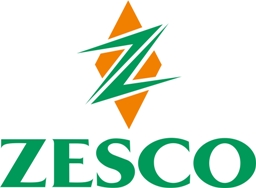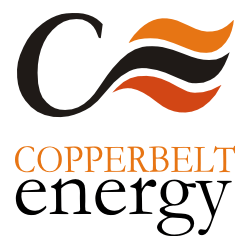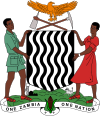Related Research Articles

The Kariba Dam is a double curvature concrete arch dam in the Kariba Gorge of the Zambezi river basin between Zambia and Zimbabwe. The dam stands 128 metres (420 ft) tall and 579 metres (1,900 ft) long. The dam forms Lake Kariba, which extends for 280 kilometres (170 mi) and holds 185 cubic kilometres (150,000,000 acre⋅ft) of water.

Ndola is the third largest city in Zambia and third in terms of size and population, with a population of 475,194, after the capital, Lusaka, and Kitwe, and the second largest in terms of infrastructure development after Lusaka. It is the industrial and commercial center of the Copperbelt, Zambia's copper-mining region, and capital of Copperbelt Province. It lies just 10 kilometres (6.2 mi) from the border with DR Congo. It is also home to Zambia's first modern stadium, the Levy Mwanawasa Stadium.

Burning of renewable resources provides approximately 90 percent of the energy in Uganda, though the government is attempting to become energy self-sufficient. While much of the hydroelectric potential of the country is untapped, the government decision to expedite the creation of domestic petroleum capacity coupled with the discovery of large petroleum reserves holds the promise of a significant change in Uganda's status as an energy-importing country.

Ghana generates electric power from hydropower, fossil-fuel, and renewable energy sources such as wind and solar energy. Electricity generation is one of the key factors in order to achieve the development of the Ghanaian national economy, with aggressive and rapid industrialization; Ghana's national electric energy consumption was 265 kilowatt hours per each one in 2009.

ZESCO is a state-owned power company in Zambia. It is Zambia's largest power company producing about 80% of the electricity consumed in the country. ZESCO represents Zambia in the Southern African Power Pool.
Morocco's energy policy is set independently by two agencies of the government: the Office of Hydrocarbons and Mining (ONHYM) which sets domestic oil policy, and the Office National de l'Electricité (ONE), which sets policy with regard to electricity. The two major weaknesses of the energy policy of Morocco are the lack of coordination between these two agencies and the lack of development of domestic energy sources.
The Kafue Gorge Upper Power Station (KGU), is an operational 900 megawatts (1,206,920 hp) hydroelectric power plant across the Kafue River in Zambia.

Renewable energy in Nepal is a sector that is rapidly developing in Nepal. While Nepal mainly relies on burning biomass for its energy needs, solar and wind power is being seen as an important supplement to solve its energy crisis. The most common form of renewable energy in Nepal is hydroelectricity.

This article describes energy and electricity production, consumption, import and export in Kenya. Kenya's current effective installed electricity capacity is 2,651 megawatts (MW), with peak demand of 1,912 MW, as of November 2019. At that time, demand was rising at a calculated rate of 3.6 percent annually, given that peak demand was 1,770 MW, at the beginning of 2018. Electricity supply is mostly generated by renewable sources with the majority coming from geothermal power and hydroelectricity.
Tanzania has a wide range of energy resources in abundance, which are not yet fully exploited. These include; wood fuel, other biomass fuels, hydropower, natural gas, coal, wind, geothermal, uranium and solar.

Copperbelt Energy Corporation Plc (CEC) is a Zambian electricity generation, transmission, distribution and supply company with operations in Zambia and Nigeria. The company is listed on the Lusaka Stock Exchange
Renewable energy sources are important for Azerbaijan. However, except for hydropower, few renewable energy sources are utilized. One of the alternative sources of energy is wind energy. It is also more profitable due to the cost, ecological cleanness, and its renewable properties compared to other alternative energy sources.
Burning of charcoal and wood fuel provides approximately 94 percent of the energy in Malawi. Much of the renewable hydroelectric potential of the country is untapped. As per 2018 Population and Housing Census, the national electrification rate in Malawi was 10%, with 37% of the urban population and only 2% of the rural population having access to electricity.
The Indeni Petroleum Refinery is an oil refinery in Zambia's industrial city of Ndola.
Kafue Gorge Lower Power Station (KGL), is a 750 megawatts (1,010,000 hp) hydroelectric power station in Zambia.
The Ngonye Falls Power Station, is a planned hydroelectric power station across the Zambezi River in Zambia. The power station will have maximum generating capacity of 180 megawatts (240,000 hp) when completely developed. The energy will be sold to ZESCO under a long-term power purchase agreement. It is named after the nearby Ngonye Falls.
Ngonye Solar Power Station (NSPS), is a 34 MW (46,000 hp) solar power plant in Zambia. The solar farm that was commercially commissioned in April 2019, was developed and is owned by a consortium comprising Enel Green Power of Italy, a multinational renewable energy corporation, and the Industrial Development Corporation of Zambia (IDC), a parastatal company. The power station cost about US$40 million to develop.
Mozambique has abundant energy sources available for exploitation. As of 2021, the country was ranked first in energy potential of all the countries in the Southern African Power Pool (SAPP), with an estimated energy capacity of 187,000 MW. Available energy sources include coal, hydroelectricity, natural gas, solar energy and wind power. As of September 2021, the largest proportion of the power currently generated is from hydroelectric sources. However the energy mix in the country is changing. Natural gas powered energy stations are expected to provide 44 percent of total energy generation from 2020 to 2030.
The Kalulushi Concentrated Solar Power Station, also Kalulushi CSP Station, is a proposed 200 MW (270,000 hp) concentrated solar power plant in Zambia. The power station is under development by three IPPs, Margam Valley Solar Energy Corporation, Afrisolar Power and EnergyLine Zambia. The power generated here will be integrated into the national grid through Zambia Electricity Supply Corporation Limited (ZESCO).
References
- 1 2 Chimase, Margaret (25 May 2016). "An overview of the energy sector". Zambia Daily Mail . Lusaka. Retrieved 21 April 2018.
- ↑ "Zambia : Zambia's Electricity Generation Capacity Increases to 1,901MW'". Lusaka Times. 29 March 2017. Retrieved 10 January 2021.
- 1 2 3 Africa-EU-Renewables (2016). "Zambia: Energy Sector". Africa-EU-Renewables.org. Retrieved 21 April 2018.
- ↑ Zambia Development Agency (2016). "Zambia Development Agency: Overview of Zambia's Energy Sector". Lusaka: Zambia Development Agency. Retrieved 21 April 2018.
- 1 2 "Zambia's ZESCO Declares 1,000 MW Surplus in Power Generation — Is It Now Time To Accelerate EV Adoption?". Clean Technica. 21 July 2022.
- ↑ Africa-EU-Renewables (2016). "Zambia: Renewable source Potential". Africa-EU-Renewables.org. Retrieved 21 April 2018.
- ↑ Taonga Clifford Mitimingi, and Paul Burkhardt (16 March 2018). "Glencore, Vitol Bid for Stake in Zambia's Sole Oil Refinery". Bloomberg LP . Retrieved 21 April 2018.
- ↑ Chris Mfula, and James Macharia (16 April 2018). "Zambia Short-Lists Five Firms For Majority Stake In Oil Refinery". Rigzone.com Quoting Reuters . Retrieved 21 April 2018.
- ↑ National Report—Zambia: The United Nations Conference on Sustainable Development (PDF). United Nations Conference on Sustainable Development. 2012.
- ↑ "Discussing climate change and renewable energy in Zambia". Energy Central. 9 October 2020. Retrieved 10 January 2021.
- ↑ Chisanga, Melony (27 April 2016). "Is renewable energy a solution to Zambia's energy deficit?". Lusaka Times . Lusaka. Retrieved 21 April 2018.
- ↑ Deka Zulu, Bernadette (18 March 2019). "Zambia Scores with "First Scaling Solar Project in Africa". Lusaka Times . Lusaka. Retrieved 18 March 2019.
- ↑ "French company secures 25-year power purchase agreement for a 54 MW solar project in Zambia". Lusaka Times . Lusaka. 18 March 2019. Retrieved 14 March 2017.
- ↑ Mulozi, L. (2008). "Rural Access: Options and Challenges for Connectivity and Energy in Zambia Thematic Report" (PDF). Retrieved 5 June 2020.
- ↑ Chirwa, Damaseck; Goyal, Rahul; Mulenga, Enock (1 March 2023). "Floating solar photovoltaic (FSPV) potential in Zambia: Case studies on six hydropower power plant reservoirs". Renewable Energy Focus. 44: 344–356. doi: 10.1016/j.ref.2023.01.007 . ISSN 1755-0084.
